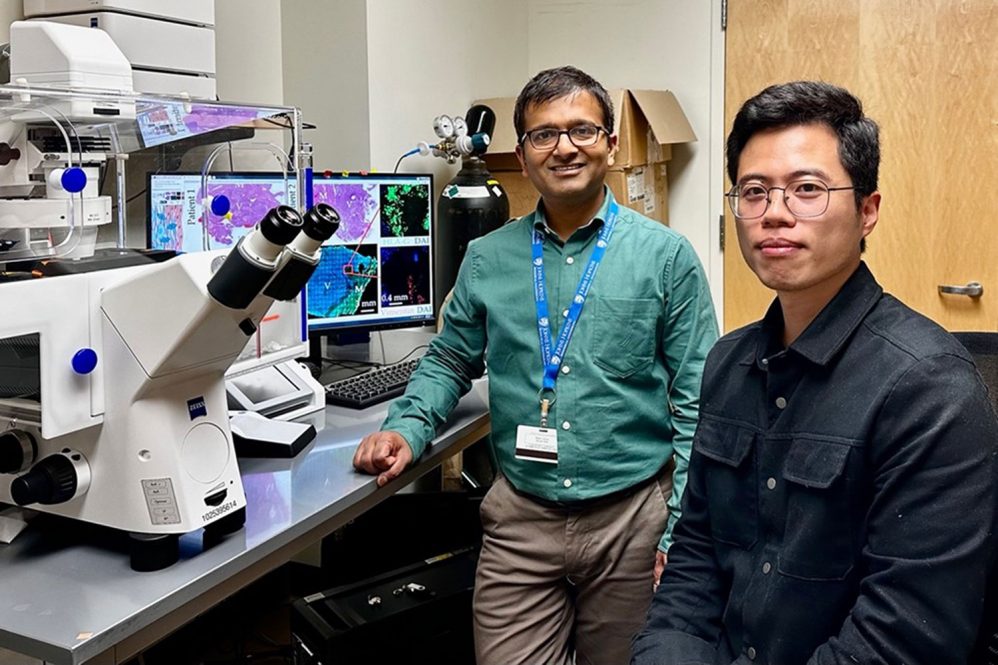Looking at placenta accreta, UConn researchers come closer to understanding the implications of scars

Kshitiz (left), associate professor of biomedical engineering in the UConn School of Dental Medicine, and postdoctoral student Wenqian Du (right) have research on scar tissue and placenta accreta published in the journal "Nature Communications." (Photo by Yamin Liu)
When a scar develops from surgery, injury, or infection, the surrounding tissue transforms. While scar formation has been extensively studied, less is understood about the impact of a new scar in the tissue microenvironment.
Kshitiz, associate professor of biomedical engineering in the UConn School of Dental Medicine, took a closer look at this scar tissue phenomenon in Nature Communications. In his research, accompanied by postdoctoral student Wenqian Du, Kshitiz studied the rare yet life-threatening maternal fetal condition placenta accreta, which occurs when the placenta grows too deeply into the uterine wall, to shed some light on scar tissue.

Cesarian sections, which result in uterine scarring, are increasing rapidly. In parallel, placenta accreta cases are also increasing. The connection between uterine scarring and placenta accreta seems significant, leading the research team to further question how scarring can trigger invasive properties.
The current theory, according to the researchers, is that the scar is like an "empty road" and the placenta forms and moves into the scar. Kshitiz is skeptical of this standing theory.
"We questioned it because it does not make any sense," Kshitiz says. "If it's an 'empty road,' why doesn't the mother's womb cells take the empty road? What we found is that it is not an empty road-the scar is full of collagen."
The collagen from the scar tissue, the researchers found, transforms the endometrium of the mother into an inflammatory state. Using uterine tissue, the researchers created a synthetic scar matrix that mimicked placenta accreta. They uncovered that in the case of placenta accreta, a channel opens in the scar tissue, causing calcium to infiltrate the endometrium and cause inflammation. When the inflammation occurs, specific molecules start aggressively recruiting placental cells towards themselves in a very invasive manner.
The researchers now have a better understanding about the implications of scarring, unlocking the possibility for more studies about scar tissue in the future.
"As one of the first major studies on the basic biology of placenta accreta, this discovery opened a whole new area where we can start asking questions about the implications of scars," says Kshitiz. "By looking at placenta accreta we can learn about the invasive processes caused by scar tissue."
Last year, Kshitiz was awarded $2.5 million in R01 funding from the Eunice Shriver National Institute of Child Health and Human Development (NICHD) to address the mechanisms driving placenta accreta spectrum.






